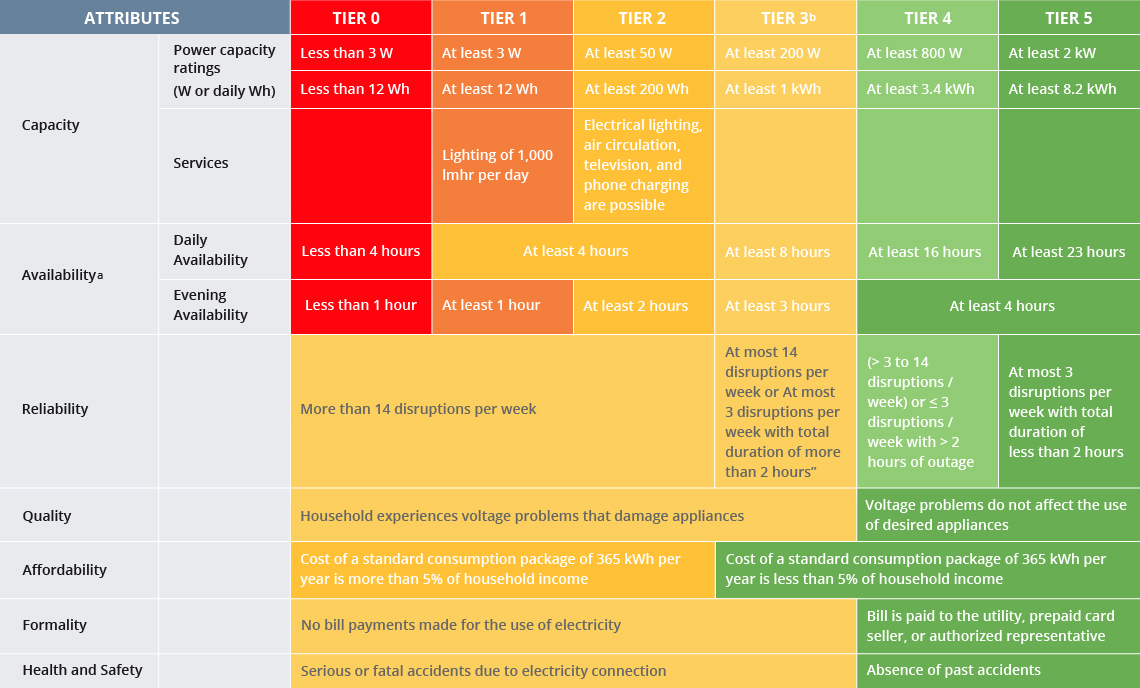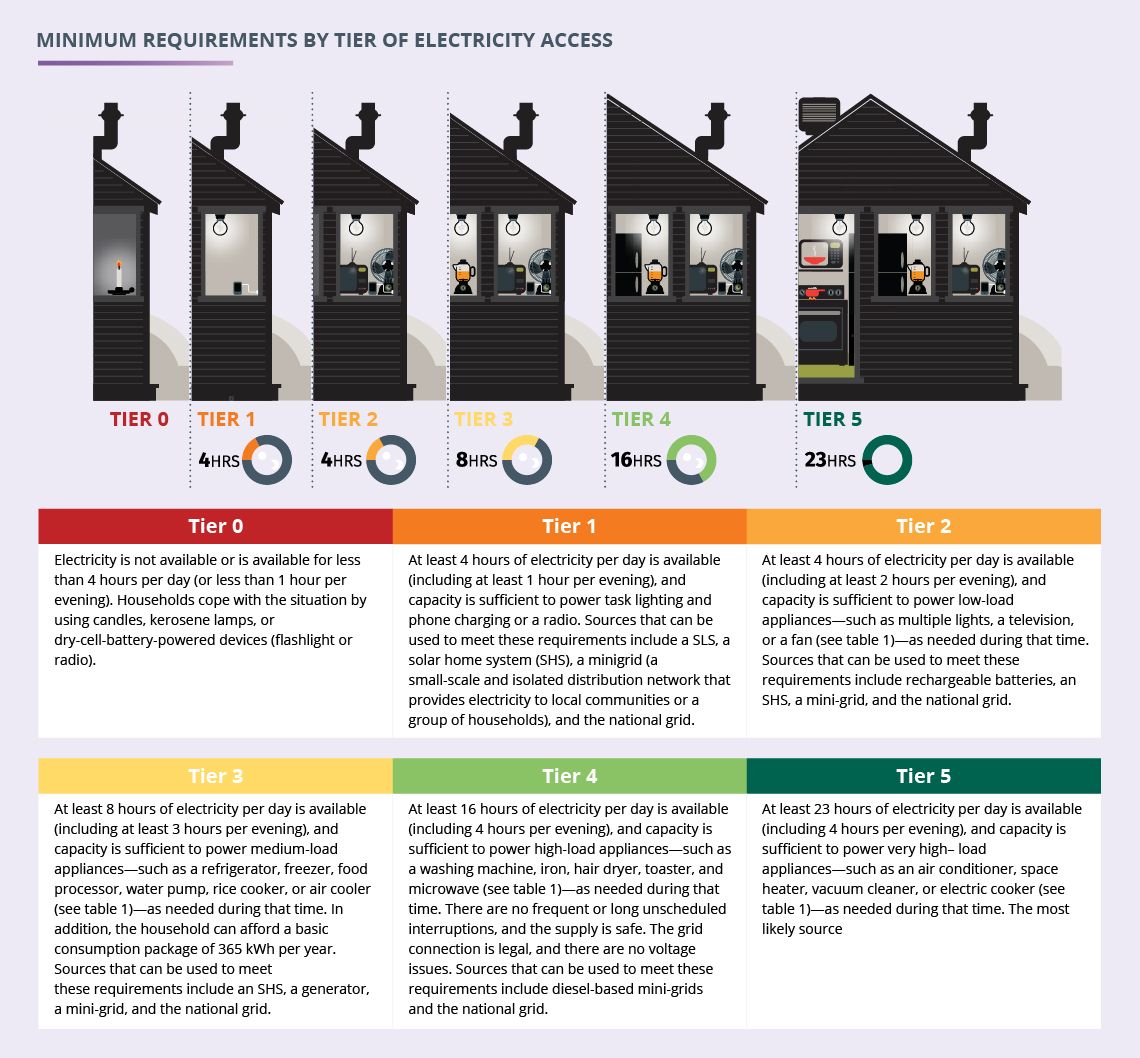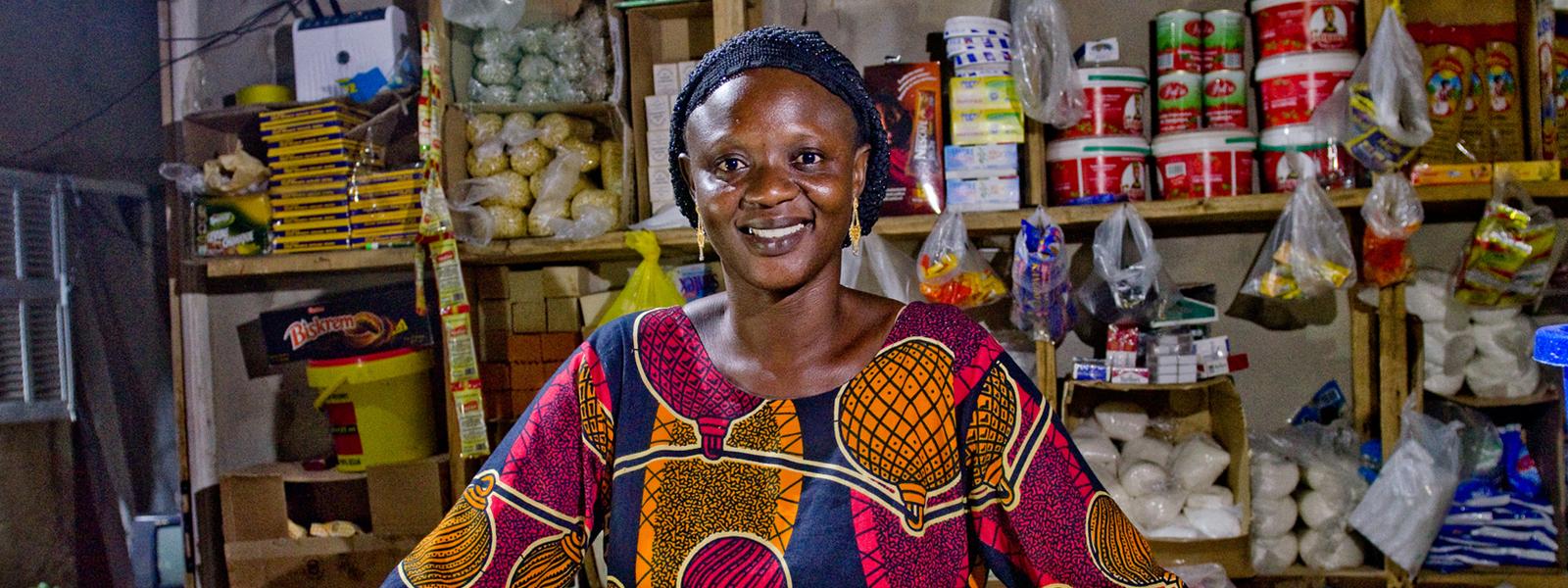Electricity
Electricity access is measured based on the combination of seven attributes of energy across six tiers of access with minimum requirements by tier of electricity access.
The MTF starts with the lowest level of access (Tier 1), referring to limited access to small quantities of electricity for a few hours per day, enabling the household to use electric lighting and phone charging (see table below). This level of access can be provided by any technology, even a small solar lighting system. Higher tiers of access are defined by higher capacity and longer duration of supply, enabling the use of medium and high load appliances (such as refrigerator, washing machine and air conditioning).
A grid is the most likely source for delivering high access tiers, although a diesel generator or a large mini-grid may do so as well. Nonetheless, additional attributes - beyond capacity and duration – are accounted for in higher tiers of access, such as reliability, quality, affordability, legality and safety.
Each attribute is assessed separately, and the overall tier for the household’s access to electricity is calculated by applying the lowest tier obtained in any of the attributes.
Multi-Tier Framework for Measuring Access to Electricity

a. Previously referred to as “Duration” in the 2015 Beyond Connections report, this MTF attribute is now referred to as “Availability,” examining access to electricity through levels of “Duration” (day and evening). Aggregate tier is based on lowest tier value across all attributes* Color signifies tier categorization.
Source: Bhatia and Angelou 2015.

Source: Bhatia and Angelou 2015.







